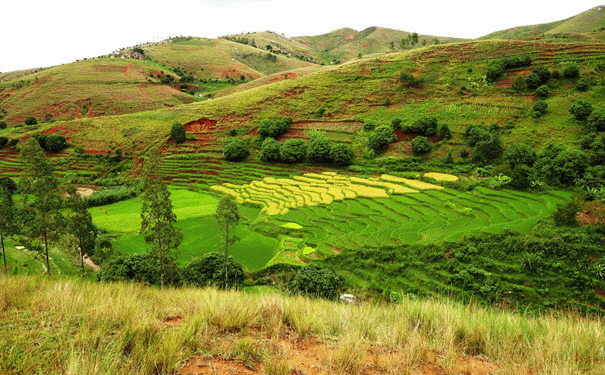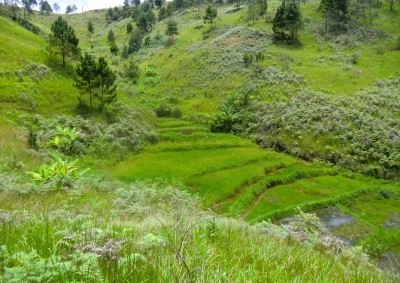ZAMBAZAMBA - Pilot Project for Integrated Water Resources Management (IWRM) Coordination
Partners
Main goals
According to the FAO, agricultural production will have to increase by 70% globally by 2050 to cover growing food needs and will have to double in developing countries. This necessary increase in production will have consequences for water resources, already largely impacted in some parts of the world by the effects of climate change
Madagascar is even more exposed to these issues given the high prevalence of irrigated rice cultivation, which is used by about 2 million households on some 1.2 million hectares, or 60% of the cultivated area. In addition, the vast majority of Malagasy rice fields have very low water management with very simple infrastructures: channeling water from an upstream basin, and partial drainage, which partly explains low yields and causes regular conflicts with drinking water supply projects
Mobilized for several years alongside the Haute-Matsiatra Region, the city of Lyon and the Rhone-Méditerrannée-Corse Water Agency wished, with the support of the French Embassy in Madagascar, to go beyond their classical actions of drinking water supply and sanitation, by financing this pilot project of Integrated Water Resource Management
Specific objectives
The project aims to reduce the impact of agricultural, forestry and pastoral activities on water resources of the municipality of Nasandratrony
Beneficiaries
Rice farmers of the Upper Matsiatra Region
Results
** R1. ** Water: reduced pressure on the resource or increase of the resource
** R2. ** Climate: reduction of greenhouse gas emissions through the promotion / diffusion of SRA / SRI, carbon sequestration in the biomass of introduced species and in soils
** R3. ** Biodiversity: increase local biodiversity through the dissemination of agro-ecological practices and the establishment of new agro-forestry species
** R4. ** Increased income of the producers whose production systems’ evolution has been accompanied
** R5. ** Water use conflicts prevention between drinking water and irrigation water
Activities
** A1. ** Participatory development of the Zambazamba basin watershed management plan (BV) (100 ha) where the source feeding the municipality of Nasandratrony will be located
** A2. ** Protection and increase of water resources: 60 ha of agro-forestry development will be implemented, particularly in the near perimeter of the source in order to thicken the vegetation and foster the infiltration of water (instead of water runoff)
** A3. ** Economical use of water resources: dissemination to 50 producers of Improved or Intensive Rice Systems (SRA-SRI) to greatly reduce the consumption of irrigation water, optimize the use of water through off-season vegetable crops, and maintain water in the soil by reducing evaporation, infiltration and improving useful soil reserve: drip systems, soil cover, organic inputs, etc.
** A4. ** Impact measures: since it is not possible to measure a significant impact on a single intervention year, impact-measurement activities will focus on defining the initial state of Rainfall / flow relations, both at the source and at the Zambazamba BV outlet where a spillway was specifically constructed for this purpose. The measurements of the next years will be used to assess, at constant rainfall, the improvement of said flow rates
Related people
Clovis Grinand
PhD in Functional Ecology and Agronomic Sciences (SupAgro, IRD and CIRAD) and specialized in Localized Information Systems for Spatial Planning (AgroParisTech), he is an expert in land use change monitoring using remote sensing, digital soil mapping and spatial modeling applied to forestry, agronomy and landscape ecology. He is the author of numerous international scientific publications.
See moreKOLORANO - Integrated Water Resource Ma…



